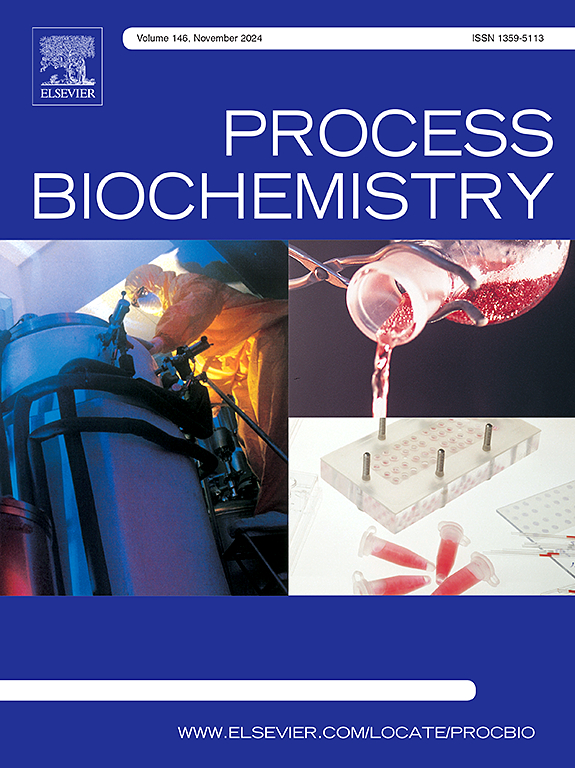Feasibility of a stereoselective synthesis of [11C](S,S)-S-adenosylmethionine ([11C](S,S)-SAM) catalyzed by an immobilized enzyme
IF 3.7
3区 生物学
Q2 BIOCHEMISTRY & MOLECULAR BIOLOGY
引用次数: 0
Abstract
This work aims to develop a stereoselective enzymatic alternative for the radiosynthesis of [11C](S,S)-S-adenosylmethionine ([11C](S,S)-SAM), a potential PET-CT radiotracer for monitoring particularly aggressive prostate tumors. Conventional synthesis of this compound has been carried out at Uruguayan Center of Molecular Imaging, resulting in an almost racemic mixture 53:47 ratio of (R,S) to (S,S) isomer. Producing the radiotracer in an optically pure form is a requirement for administration to humans and additionally it would enhance diagnostic sensitivity when administered to the patient. The main challenges were designing a biocatalyst capable of withstanding the harsh conditions of the radiotracer synthesis module and achieving the reaction in a very short time due to the rapid decay of 11C. A mutant of E. coli methionine adenosyltransferase (I303V MAT) with enhanced SAM synthesis was cloned, expressed, and immobilized on agarose using an irreversible covalent isourea bond. This immobilized enzyme synthesized [11C](S,S)-SAM from [11C]L-methionine in an automated module, with the labeled methionine produced in situ from [11C]CH3I and L-homocysteine thiolactone. The product was obtained with an enantio and diasteromeric excess greater than 99 % and average conversion of 80 %. The reuse of the immobilized enzyme was studied, showing that after three cycles of reuse the radiosynthesis performance remained unchanged.
求助全文
约1分钟内获得全文
求助全文
来源期刊

Process Biochemistry
生物-工程:化工
CiteScore
8.30
自引率
4.50%
发文量
374
审稿时长
53 days
期刊介绍:
Process Biochemistry is an application-orientated research journal devoted to reporting advances with originality and novelty, in the science and technology of the processes involving bioactive molecules and living organisms. These processes concern the production of useful metabolites or materials, or the removal of toxic compounds using tools and methods of current biology and engineering. Its main areas of interest include novel bioprocesses and enabling technologies (such as nanobiotechnology, tissue engineering, directed evolution, metabolic engineering, systems biology, and synthetic biology) applicable in food (nutraceutical), healthcare (medical, pharmaceutical, cosmetic), energy (biofuels), environmental, and biorefinery industries and their underlying biological and engineering principles.
 求助内容:
求助内容: 应助结果提醒方式:
应助结果提醒方式:


